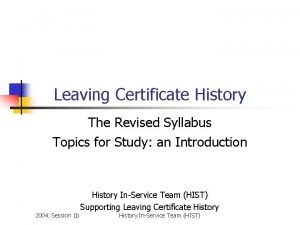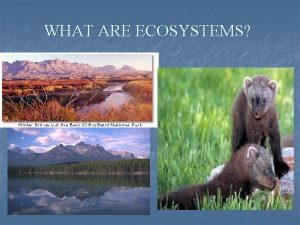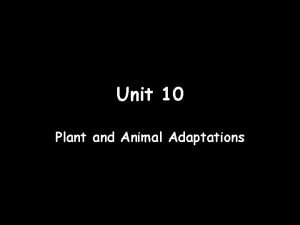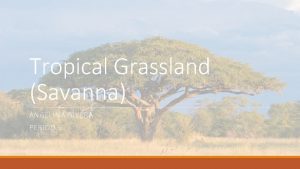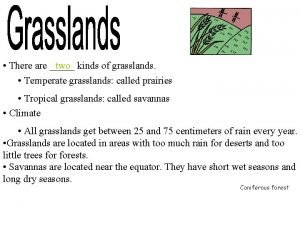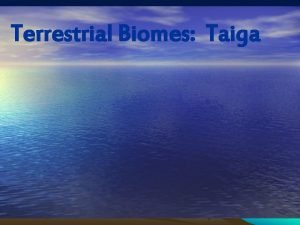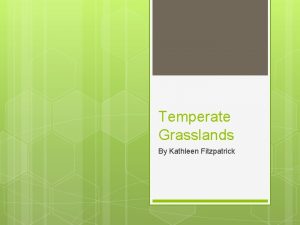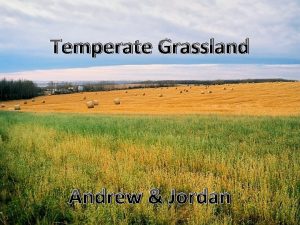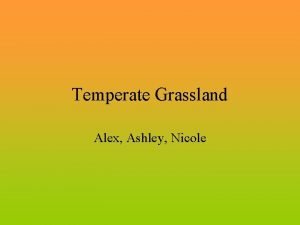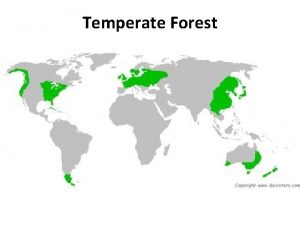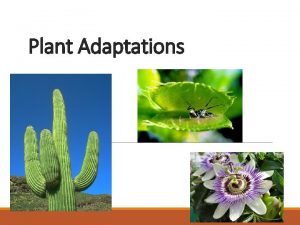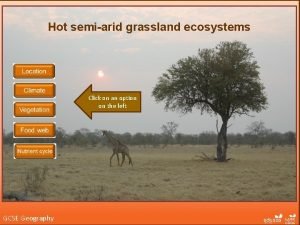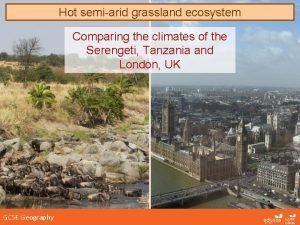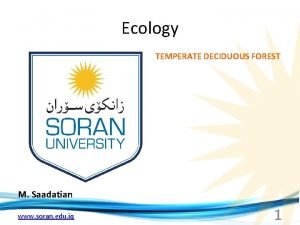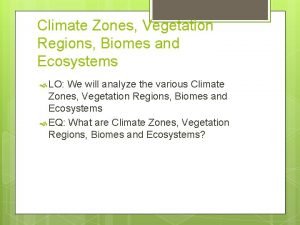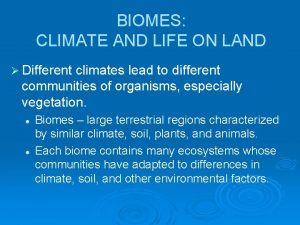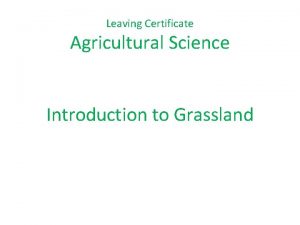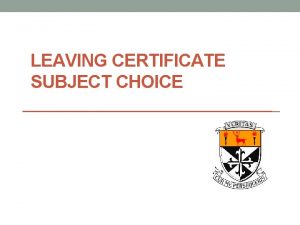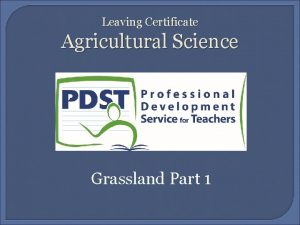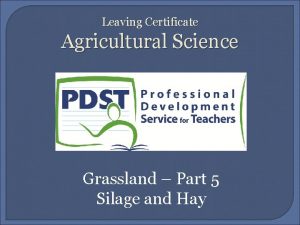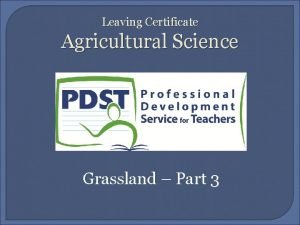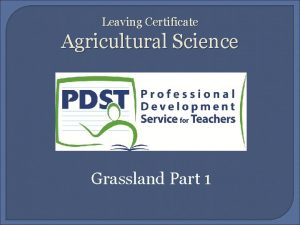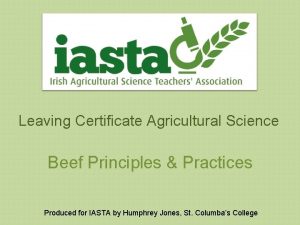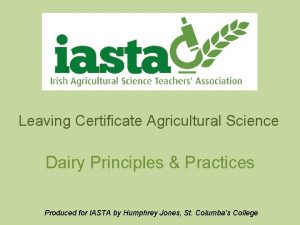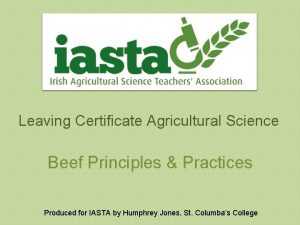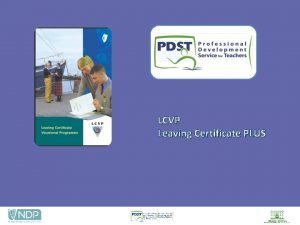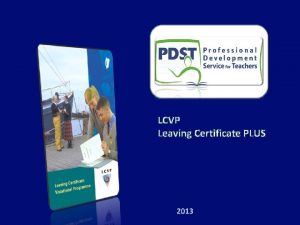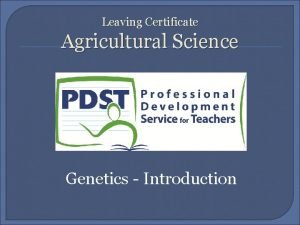Leaving Certificate Agricultural Science Introduction to Grassland Produced























- Slides: 23

Leaving Certificate Agricultural Science Introduction to Grassland Produced for IASTA by Willie White

Introduction • Irish agriculture is primarily a grass based industry. • In Ireland approximately 81% of agricultural land is devoted to grass (silage, hay and pasture). • A further 9% is in rough grazing with the remaining land used for crop production.

Some Definitions Botanical Composition: – The range of plants growing in an area. Indigenous Species: – Species of plants that grow naturally in an area.

Grassland Ecology Natural vegetation of Ireland is deciduous forest. There is a natural progression through stages: – bare soil – grass – shrubs – forest. Grazing stops this natural progression at the grass stage.

Livestock Unit • Measurement of livestock grazing, equivalent to the food consumed by a mature live weight cow. • • 2 year old cattle = 1. 0 LU, 1 -2 year old cattle =0. 6 LU, Less than a year old=0. 4 LU Sheep = each ewe or ram=0. 2 LU. Sheep 1>year =0. 16 LU. Sheep <1 year=0. 1 LU. Horse= 1 -1. 5 LU • Stocking rate is the amount of livestock units per hectare (LU/ha).

Rough Mountain and Hill Rock outcrops – difficult to lime, fertilise and reseed Variable botanical composition – poor grasses, heather and gorse Low stocking rates Low productivity



Permanent Grassland Variable botanical composition e. g. different grasses and weeds. Generally dominated by perennial ryegrass Heavily stocked and fertilised High productivity

Temporary Ley Grass as part of a rotation – will only be in grass for a few years Little variability in botanical composition – mainly the sown variety(no time for weeds to move in) High stocking rates and productivity as very good land

How do we encourage growth of top quality grasses? Top quality grasses are short and leafy and have a high concentration of sugars and starch. We encourage their growth by: – Intensive grazing – High levels of soil fertility So for all grass types keep stocking rates to a maximum to prevent the grass from becoming long and stemmy. Use lime and fertiliser as necessary.

Dry Matter in Grass Dry Matter: The matter remaining in a sample of food after the water has been removed. It is usually abbreviated to DM. (Leafy grass = 20% DM) Dry Matter Digestibility (DMD): The amount (percentage) of dry matter that can be digested by an animal. (Short leafy grass = 85% DMD)

Grass Species

What makes a Good Grass? Productivity - Yield of grass, how much it produces Palatability - Tastes good, cattle and sheep will eat it Digestibility - Easy for animals to digest, high DMD Persistency - Grass grows for a long number of years without needing to be reseeded

Digestibility When grass is in vegetative stage (short and leafy) it has a high concentration of soluble carbohydrates and proteins which are highly digestible. As the grass starts to produce stems to support seed heads there is an increase in the amount of fibre in the plant which is less digestible. The plant can go from 80% digestibility to only 50% digestibility one month later. Some grasses have better digestibility's than others.

The Grass Family • Grasses are in the family Gramineae. • All grasses are monocots. • All grasses tiller. • Grasses are wind pollinated.

Tillering • This is the development of side shoots in a plant from the base of the main shoot. • The tillers remain attached to the main plant but have their own root system. • The more side shoots a plant produces, the more productive the grass is. • Tillering can be encouraged by grazing pasture with sheep or calves and by having high levels of soil fertility.

Perennial Ryegrass High productivity, palitibility and digestibility Long growing season Aggressive grass that tillers vigorously and is persistent Likes free draining, high p. H (> 6. 0) moderate/high fertility soil.

Italian Ryegrass Very long growing season Less aggressive and does not tiller as vigoursly Main use is for silage Also requires good soil and liberal fertiliser use.

Hybrid Ryegrasses A result of a cross between different species of ryegrasses, usually PRG and IRG. They are crossed to produce a grass with hybrid vigour (has the desirable characteristics of both parents) They are combined to produce a strain with the high production level of IRG and the persistence and long growing season of PRG.

White Clover is in the Leguminosae family Protein rich legume that fixes atmospheric N (up to 130 kg/ha/yr) Very palatable and rich in minerals Suitable for grazing situations as stolons root easily when trodden into soil. Good ground cover, fills gaps between grass. Heavy fertiliser N use will reduce the amount of clover in the sward

Red Clover Not as important Used in short term leys cut for silage Hairy, bigger leaves and grow more upright than white clover.

Red Clover White Clover Pink flower White flower Hairy stems Hairless stems Erect growth habit Creeping growth habit Not as aggressive or persistent More aggressive and persistent
 Leaving certificate history syllabus
Leaving certificate history syllabus Primary school leaving examination in chinese
Primary school leaving examination in chinese Clonakiltycc vsware
Clonakiltycc vsware Her favourite subject is english
Her favourite subject is english Extra credit
Extra credit Computer science certificate princeton
Computer science certificate princeton Non living things in grasslands
Non living things in grasslands Vegetation regions
Vegetation regions Forest animals adaptations
Forest animals adaptations Where are tropical grasslands located
Where are tropical grasslands located Two temperate grassland
Two temperate grassland What makes one biome different from another?
What makes one biome different from another? What is the weather of the taiga
What is the weather of the taiga Grassland biome food web
Grassland biome food web Temperate grassland rainfall
Temperate grassland rainfall Temperate grassland plants adaptations
Temperate grassland plants adaptations Temperate forest biotic
Temperate forest biotic Grassland adaptations for plants
Grassland adaptations for plants Hot semi arid grassland
Hot semi arid grassland Hot semi arid grassland climate
Hot semi arid grassland climate Desert food web
Desert food web Southern hemisphere climograph
Southern hemisphere climograph Grassland
Grassland Temperate grassland
Temperate grassland
